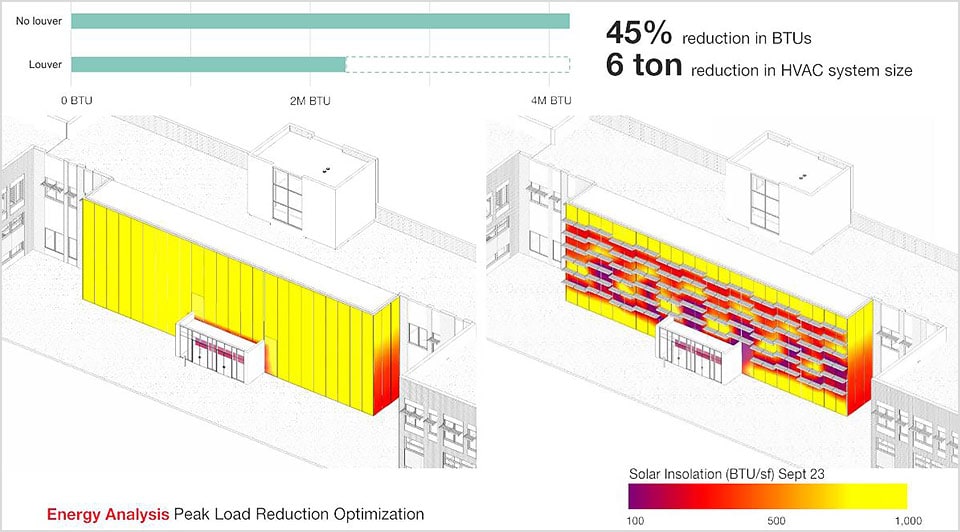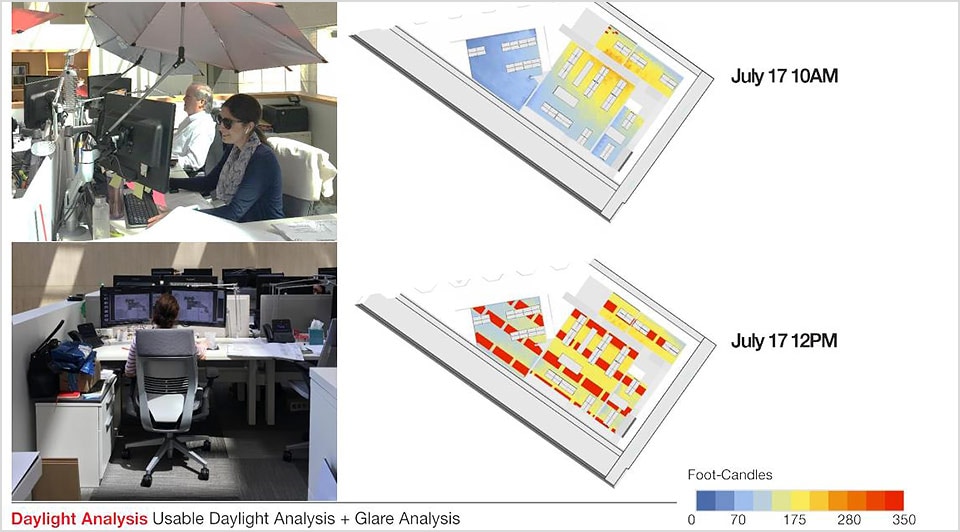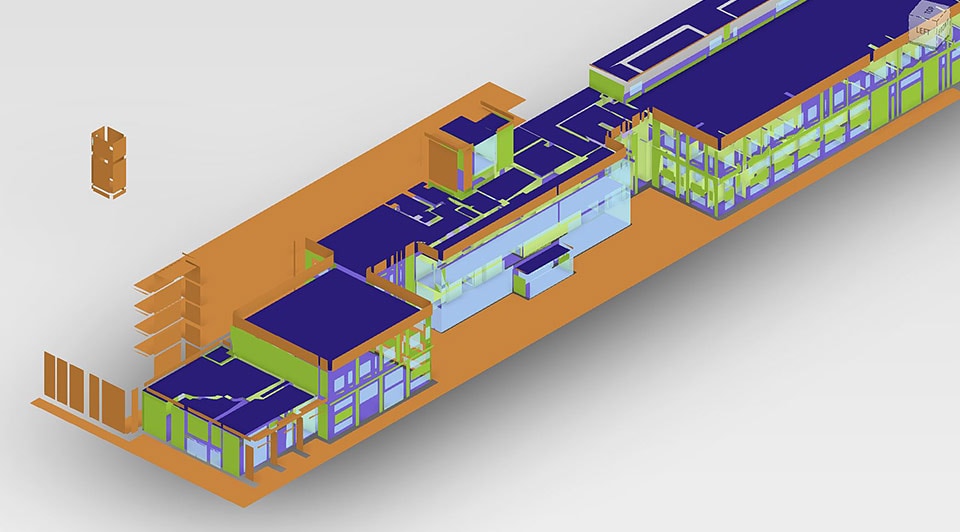Worldwide Sites
You have been detected as being from . Where applicable, you can see country-specific product information, offers, and pricing.
Keyboard ALT + g to toggle grid overlay
Page supports its AIA 2030 Commitment as it models building performance on more projects
Page, a multidisciplinary architecture and engineering firm, needed a better reporting tool to help stay on track with the American Institute of Architects (AIA) 2030 Commitment. The firm’s Houston office found that reporting was time-consuming and delivered variable results. But after turning to Autodesk’s Insight, an energy modeling and simulation tool within Revit, Page is now able to model building performance for more projects, more quickly and accurately, and easily assess progress against the AIA 2030 Commitment—from the earliest stages of the design process.
A commitment to sustainability
A 500-plus-person firm, Page focuses on complex projects that benefit from its multidisciplinary approach and services that range from building design and in-house engineering design services to interior design and brand identity and way-finding signage. The firm makes its commitment to sustainable design an integrated part of its projects. The firm has completed more than 90 LEED-certified projects, and the architects and engineers at Page collaborate with clients to set performance goals around energy and water use, human and environmental health, and resiliency. When the AIA launched the 2030 Commitment in 2010, Page joined early.
The AIA 2030 Commitment is a voluntary pledge by firms to design carbon-neutral buildings, developments and major renovations by 2030. It includes access to a data collection framework for reporting building performance data for projects. This data will help track progress towards the carbon-neutral goal.
“We have a responsibility as architects and engineers to clients and communities to use our expertise to help create higher-performance buildings,” says architect Jill Kurtz, the sustainability program manager at Page. “AIA 2030 was a perfect fit for our firm, and that’s why we were an early adopter.”

Complications of AIA 2030 Commitment Reporting
The reporting aspect of the AIA 2030 Commitment can be hard to realize. Some projects generate performance data as part of the design process because either the permitting or the client calls for it, making it easy for firms to report on those projects. But some projects don’t produce readily reportable data. Given the time, effort, and cost required to create an energy model from scratch, many firms simply don’t report some projects to the AIA 2030 Commitment.
The architects in Page’s Houston office initially turned to an energy analysis tool that offered quick access to performance data. They wanted to use the tool to help streamline 2030 Commitment reporting. Plus, they wanted a better window into how choices made early in the design process impacted performance. Unfortunately, the tool didn’t deliver consistent results.
Kurtz explains: “The desktop and cloud versions of the tool gave results that were as much as 20% different. The lack of consistency limited the usefulness of results as a starting point for performance decisions or conversations with our engineering team. We didn’t want to report results for 2030 that we weren’t confident about either. Looking for an alternative, we decided to try Insight.”
“Insight helps us to quickly identify the best options for performance, minimize peak loads to reduce final costs and optimize daylighting for occupant comfort. Our clients can make more informed choices about aesthetics, function and performance during conceptual design, which helps us design better buildings.”
—Jill Kurtz, Senior Associate, Sustainability Program Manager, Page
Making building performance analysis easier and more accurate
The Page design team liked how easy it was to use Insight. They could start with a conceptual model created with Revit or FormIt, a 3D sketching app with Revit interoperability, and conduct performance simulation and modeling in Insight. Using sliders to change parameters, Page’s designers could visualize and interact with performance factors, such as orientation, lighting, and glazing. Setting up a model for analysis took as little as an hour, making it a viable option for gathering data for the 2030 Commitment.
The results were also far more accurate than the previous tool. The engineers at Page helped the firm’s architects and designers evaluate Insight. Jimmy Principe, a mechanical engineer with Page, used Insight to create a box model of a completed project for which he already had a detailed performance model. He then refined his existing detailed model to match the less-detailed information in Insight.

The Page design team liked how easy it was to use Insight. They could start with a conceptual model created with Revit or FormIt, a 3D sketching app with Revit interoperability, and conduct performance simulation and modeling in Insight. Using sliders to change parameters, Page’s designers could visualize and interact with performance factors, such as orientation, lighting, and glazing. Setting up a model for analysis took as little as an hour, making it a viable option for gathering data for the 2030 Commitment.
The results were also far more accurate than the previous tool. The engineers at Page helped the firm’s architects and designers evaluate Insight. Jimmy Principe, a mechanical engineer with Page, used Insight to create a box model of a completed project for which he already had a detailed performance model. He then refined his existing detailed model to match the less-detailed information in Insight.
“The results were well within 5% of each other for both models,” says Principe. “We were able to validate that Insight delivers useful performance information in the conceptual design stage, which is when owners and architects make many important design decisions.”
He adds, “Sometimes engineers join projects later in the design process, and find that early design decisions negatively impact overall building performance. But it’s too late to change course. Insight opens the door to better decisions around things like orientation, daylighting, and glazing as you’re creating concepts.”

Reporting more projects

Confident in the validity of Insight data, the Page Houston office decided to create energy models for pre-existing projects so it could include them in 2030 Commitment reporting. “We modeled about 8 to 10 projects in a day,” says Kurtz. “It took an hour or less for many projects. Insight makes it easy to report on projects that wouldn’t otherwise include performance modeling. Previously, we had to rely on more detailed engineering models that could take up to a week to complete.”
Meeting commitments and improving performance
Since turning to Insight, the Page team has found that it’s furthering the firm’s commitment to AIA 2030 in two ways. Insight helps the firm report the required data more accurately for more projects. It’s also allowing them to make energy performance modeling and simulation a key component of more projects—from the very beginning. “Last year, we reported 50% of our projects for the AIA 2030 Commitment, but in the office where we implemented Insight this year, that percentage increased to 95%,” says Kurtz. “It’s just so much easier to generate data in a format suitable for the 2030 Commitment with Insight.”
“We’re also better able to explore the design decisions that impact performance with clients early in the process,” Kurtz adds. “Insight helps us to quickly identify the best options for performance, minimize peak loads to reduce first costs, and optimize daylighting for occupant comfort. Our clients can make more informed choices about aesthetics, function, and performance during conceptual design, which helps us design better buildings.”